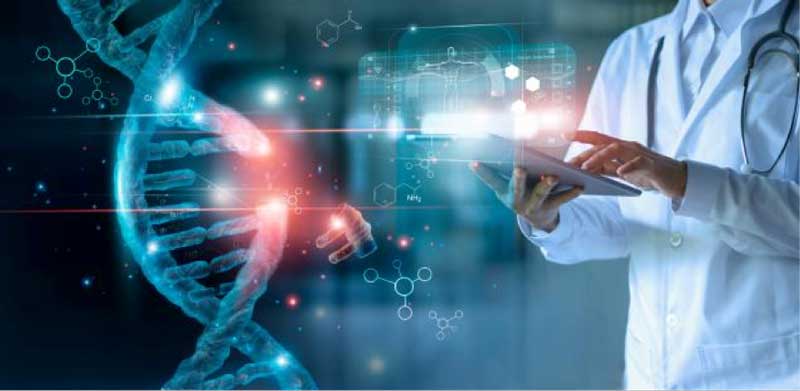Governments across the globe are under pressure to operate more efficiently, provide higher-quality working environments for their employees, and better serve citizens. The success of data-driven automation in the private sector shows that technological investments have the potential to aid these causes – it’s well and truly time to automate government services.
Artificial intelligence (AI) based systems can benefit several functions of government by lowering operating costs, streamlining processes, reducing wastage, and minimizing human error. Estimates suggest that four out of five processes in HR and finance are – at least partially – automatable, with a cost reduction of over 30 percent highly likely.
The potential of AI in the public sector is very real, but if governments are to utilize automation at scale, they must be strategic in their approach. And that’s where data science comes into play.
How Government Is Already Using Data Science
Government bodies are already using data science to track and recognize patterns, improve services, and make informed decisions across several sectors.
Healthcare – The Food and Drug Administration (FDA) uses big data analysis in a Technology Transfer program that identifies and comprehends patterns in foodborne diseases. The organization also uses big data technologies to react faster and more effectively to food products that have become contaminated somewhere along the supply and manufacturing chain.
The Center for Disease Control (CDC) sifts through social media posts to track the spread of ailments. Similar to this, the government is also subsidizing a venture that aims to recognize early signs of suicidal inclinations through social media behaviors.
Education – The US Branch of Education has created a learning analytics and data mining framework that screens and remedies online students’ study patterns and identifies fatigue in real time.
Fraud Detection – Fraud detection is a key area where data science is used by the government to the nation’s advantage. Down under, the Australian Electoral Commission (AEC) simulates data to detect and explore potential electoral fraud.
Crime – The US Division of Homeland Security (DHS) is leading the way in its use of data science. Utilizing big data methodologies and interoperability, the DHS has successfully integrated data from various security offices with the aim to anticipate potential dangers.
Financed by the CIA, Palantir Technologies manages an analytical software that fights terrorism by locating roadside bombs and battles cybercrime by tracing transactions that appear fake.
Perhaps the most well-known instance of law implementation utilizing data science was following the Boston Marathon bombarding. Big data tech quickly broke down almost 500,000 images and identified several as being relevant using codes and algorithms based on descriptions of the suspect.
Opportunities for Automation Using Data Science
Data science already plays a critical role in government, but further opportunities for automation remain untapped. Automated processes offer accuracy, scalability, and traceability, leading to greater transparency, improved services offerings, and more consistency for both employees and public citizens.

Automation in Finance – Government departments typically conduct the same core finance processes as private-sector companies: They manage month- and year-end finances, disperse cash, budget, plan, and analyze. Some even use the same enterprise resource planning (ERP) and financial systems as their private counterparts.
According to research, about 80 percent of tasks performed in private-sector financial firms are fully or partially automatable – these figures can be assumed for government departments that perform similar functions.
Generalized accounting, cash disbursement, and financial planning are obvious contenders for automation. Paired with data science, financial departments can use AI-based systems to identify successes and failures of past budgetary decisions, more accurately track fraudulent activity, and more.
Automation in HR – In many countries, the government is the single largest employer. In the US, the Office of Personnel Management alone employs over 5,000 people – a figure that doesn’t include the individual HR staff in other departments and agencies that manage the federal government’s 2.8 million-strong workforce.
Approximately 80 percent of HR processes are thought to be automatable, with things like payroll and benefits administration, recruitment, and record-keeping being standout candidates.
Recruitment, in particular, lends itself to data-driven automation. Departments can use big data technologies to automatically screen applicants, identify talent trends, eliminate those that are unsuitable for the position, and escalate those that are.
Automation in Application Processing – Governments process applications for a whole range of services and payments, such as visas, welfare benefits, and tax returns. Over the past few years, the government has enhanced the front-end, citizen-facing experience. But, because clunky back offices are still grappling with legacy IT systems and siloed databases, there is still significant room for improvement.
Automated processes backed by data science can assist by interpreting and writing data between applications and checking for consistency, bridging the gap between innovative front-ends and legacy back-ends.
Harnessing the Power of Data Science in Automation
The potential of data science is huge in the public sector. Governments are tasked with recording, storing, tracking, interpreting, and responding to more data than ever before – and the data pool is only going to expand as the population grows and more and more services become digitized.
Intelligent analytics can inform automated processes that save time, reduce wasted resources, improve accuracy and consistency, and enhance the workplace experience for government employees. Further, many data-backed automations can be implemented using existing infrastructure.
Michael Brenner is a keynote speaker, author and CEO of Marketing Insider Group. Michael has written hundreds of articles on sites such as Forbes, Entrepreneur Magazine, and The Guardian and he speaks at dozens of leadership conferences each year covering topics such as marketing, leadership, technology and business strategy. Follow him @BrennerMichael.
© 2020 Nutanix, Inc. All rights reserved. For additional legal information, please go here.



